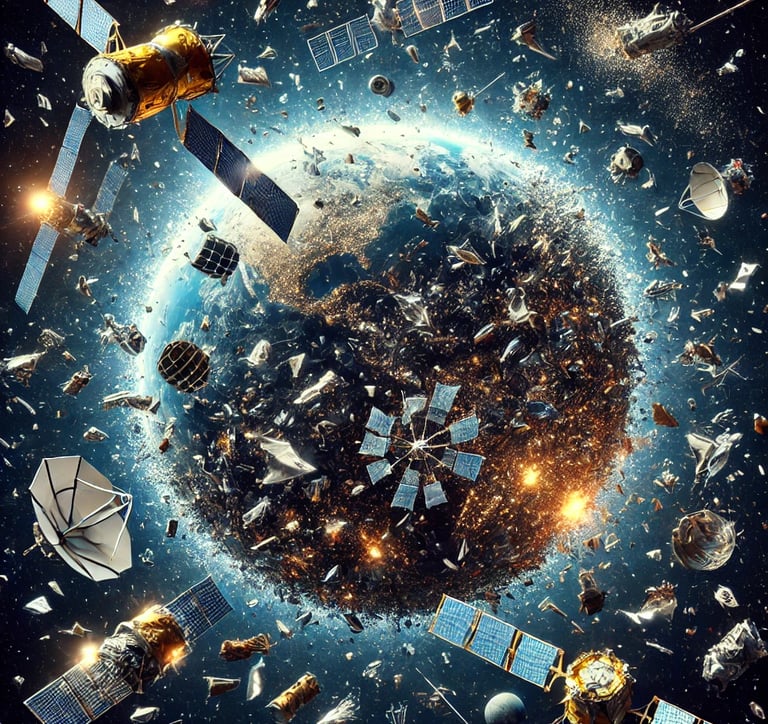Addressing Space Debris: The Kessler Syndrome Threat
Space debris poses a significant risk of catastrophic collisions in Earth's orbit. This blog post explores Kessler syndrome, the growing threat of space collisions, and its impact on global communications and space exploration.
GENERAL TOPIC
Dr. Rani
11/17/20242 min read


In November, a piece of space debris posed a significant threat to the International Space Station (ISS). The astronauts on board had to brace for impact as the station’s trajectory was adjusted to avoid collision. Such incidents are not uncommon, as space debris continues to increase, with the risk of damaging satellites and crucial space technologies growing every year. NASA and other experts have expressed concerns about the rising volume of space junk resulting from past collisions, explosions, and weapon tests.
Kessler Syndrome, a hypothetical scenario described by astrophysicist Donald Kessler, refers to a chain reaction where debris collisions create more fragments, leading to even more collisions. This could eventually render Earth's orbit unusable, causing long-term disruptions to satellites, communications, GPS, and space exploration. Although experts disagree on the exact timing of such an event, there is broad agreement that space congestion is becoming a serious issue.
The number of space debris incidents is increasing, with over 650 recorded since the start of space exploration. This includes satellite collisions and explosions that generate fragments. These fragments, even if small, can cause significant damage because objects in space move at extreme speeds.
Tracking space debris is a challenge, as only objects larger than 10 centimeters can be easily tracked. Smaller pieces, which still pose a danger, are difficult to monitor. The situation is particularly concerning in low-Earth orbit, where space is most crowded. Higher altitudes, such as geosynchronous orbit, are even more dangerous, as debris there remains for centuries without natural cleanup.
Efforts to mitigate the growing debris problem include the development of debris removal technologies, such as the European Space Agency’s braking sail, which helps defunct satellites burn up in Earth's atmosphere. Additionally, improved tracking systems are being implemented to prevent collisions. However, these technologies are costly, and international regulations are still under development.
The future of space exploration and global communications is at risk if the issue of space debris is not addressed. Scientists warn that, much like ocean pollution, space debris is a finite resource that, if left unmanaged, could cause catastrophic damage to both our technologies and the long-term viability of space missions.
